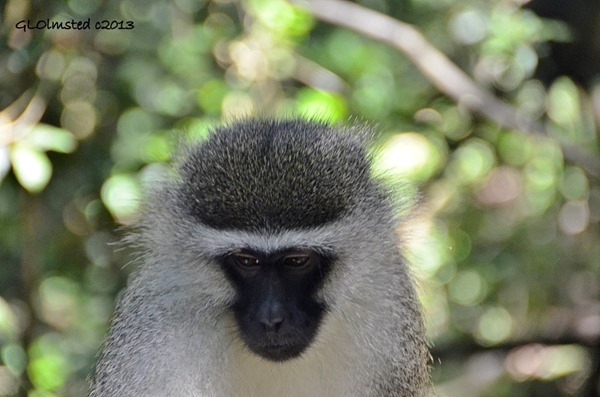
I do not care for zoos or the caging of animals and prefer to be in the car/truck cage driving through the wild yet for a more personal experience and intimate photos I did enjoy getting close up at Monkeyland.
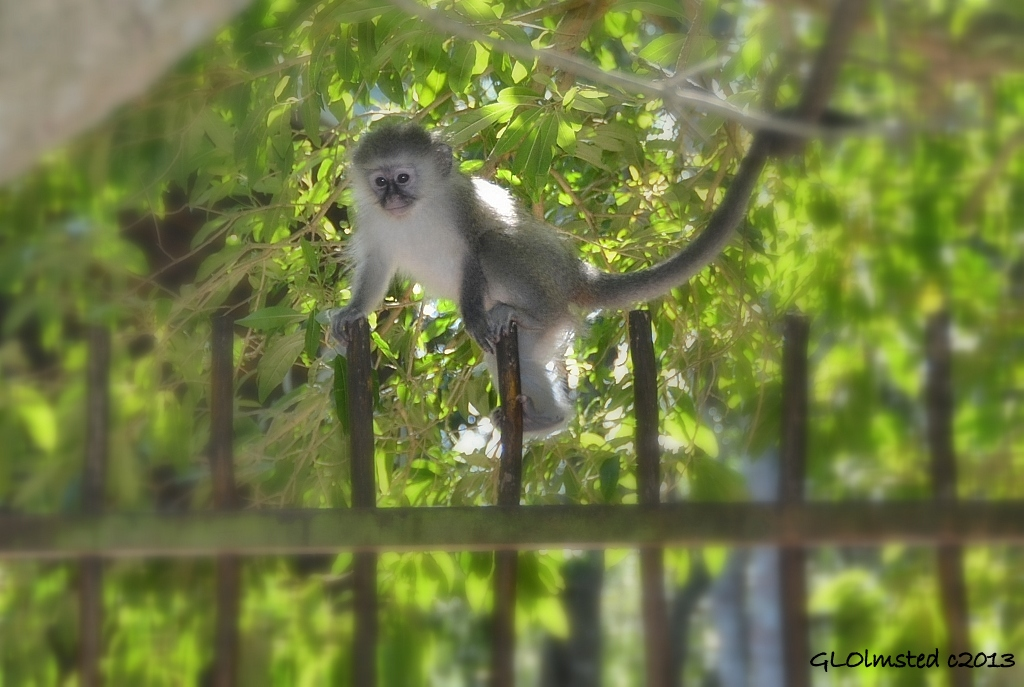
I’ve seen monkeys coming into camp in Kruger, Mountain Zebra and Addo Elephant National Parks. They are the one animal that can conquer high fences. And just like US National Park squirrels, while looking for human food often become troublesome and destructive.
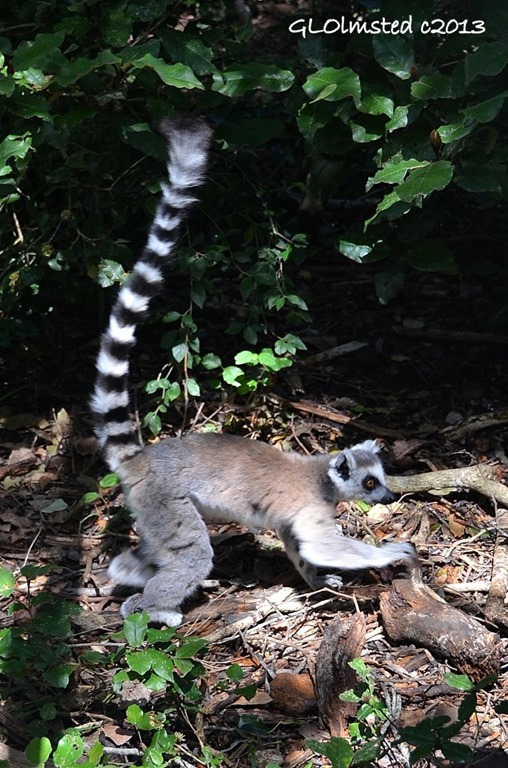
My hosts at Wild Spirit recommended Monkeyland and others at the Backpacker’s Lodge wanted to go as well. I had a car so we crammed five people into the VW Pollo and cruised up the road about 20 minutes to The Crags. The one hour guided tour cost $27 each which also included almost unlimited time walking through Birds of Eden on our own.
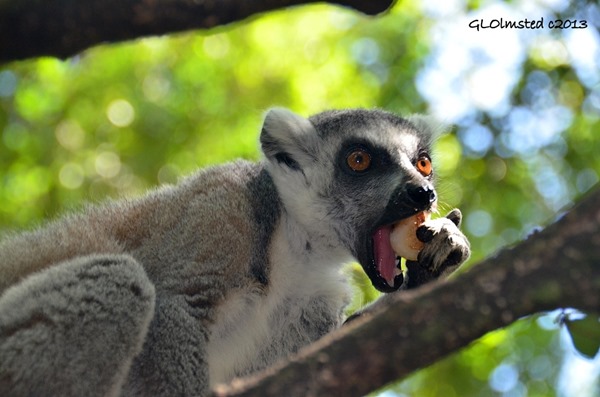
Ring-tailed Lemurs greeted us and seemed to be everywhere. Although they didn’t approach us they were unfazed by our close proximity.
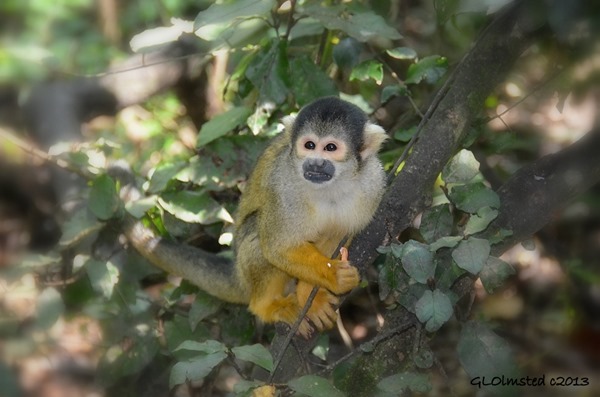
Monkeyland is the worlds first free roaming multi-specie primate sanctuary created by Tony Blignaut in 1998 to provide safe haven for otherwise caged primates from private homes and zoos. This educational facility strives to teach visitors about the rapid decline of natural habitats due to logging, mining, agriculture and human settlements.
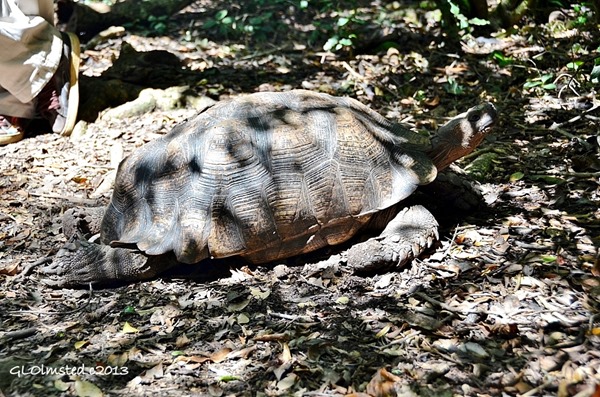
I was surprised to see a tortoise lumbering through the foliage.
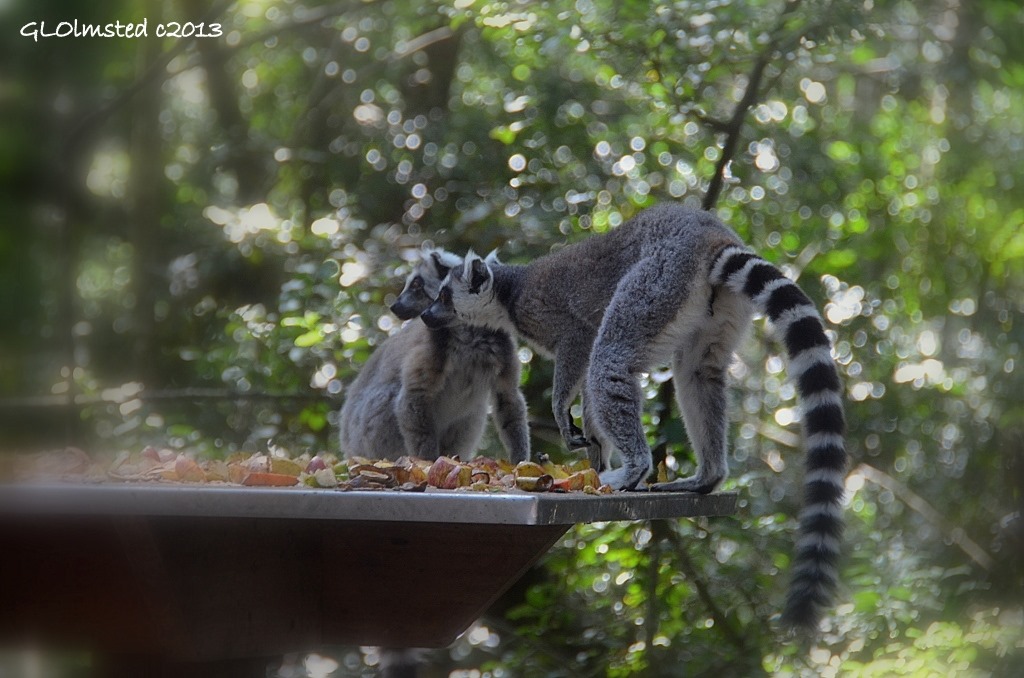
Monkeyland’s forest encompasses almost 30 acres (12 hectare) designed to protect indigenous Baboons, Vervet Monkeys and other wildlife. The sanctuary provides a home to almost 450 primates and since most are originally from exotic habitats this forest does not naturally provide enough appropriate food so a variety of food is supplied to fulfill their needs.
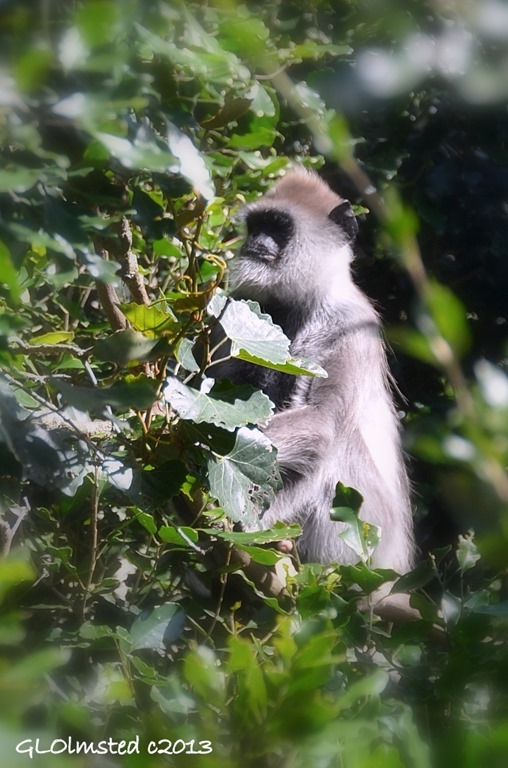
The guide told us about all the different animals seen but to be honest I was busy snapping photos and not paying much attention.
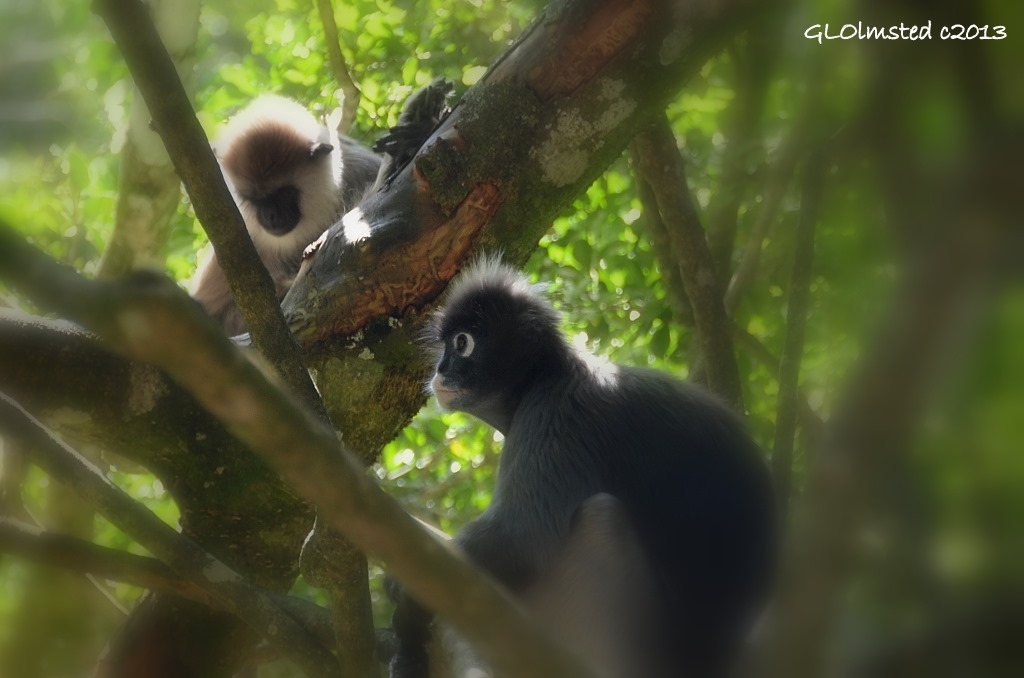
This unlikely match of Langurs hang out together. I think the guide said that the ‘he’ Hanuman takes care of the ‘she’ Spectacled, but no worry about cross breeding as she’s not fertile. Hey, they’re friends.
The suspension bridge is reported to be the longest in Africa at 420 feet (128 meters). Keeping all the thousands of visiting feet off the ground reduces impact on the environment. And being up in the trees kind of reminded me of the Tsitsikamma zip-line.
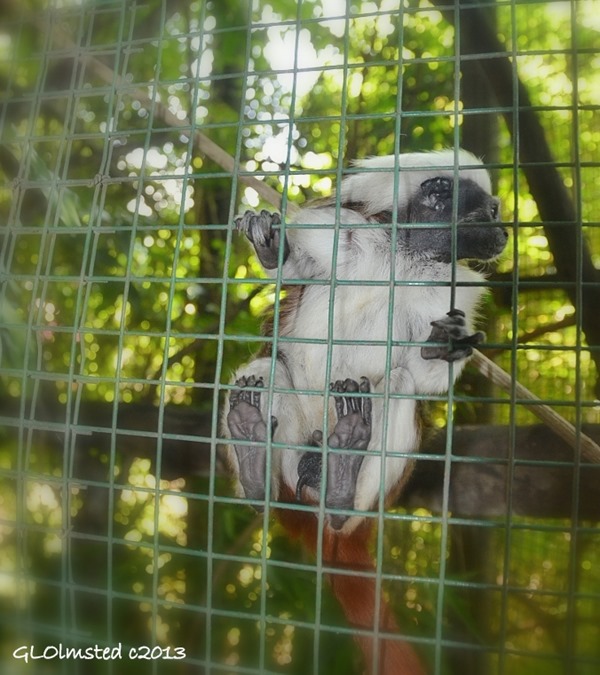

New arrivals are kept in cages to acclimate as are some disabled, orphaned, elderly or blind. The idea is to give these animals a chance.
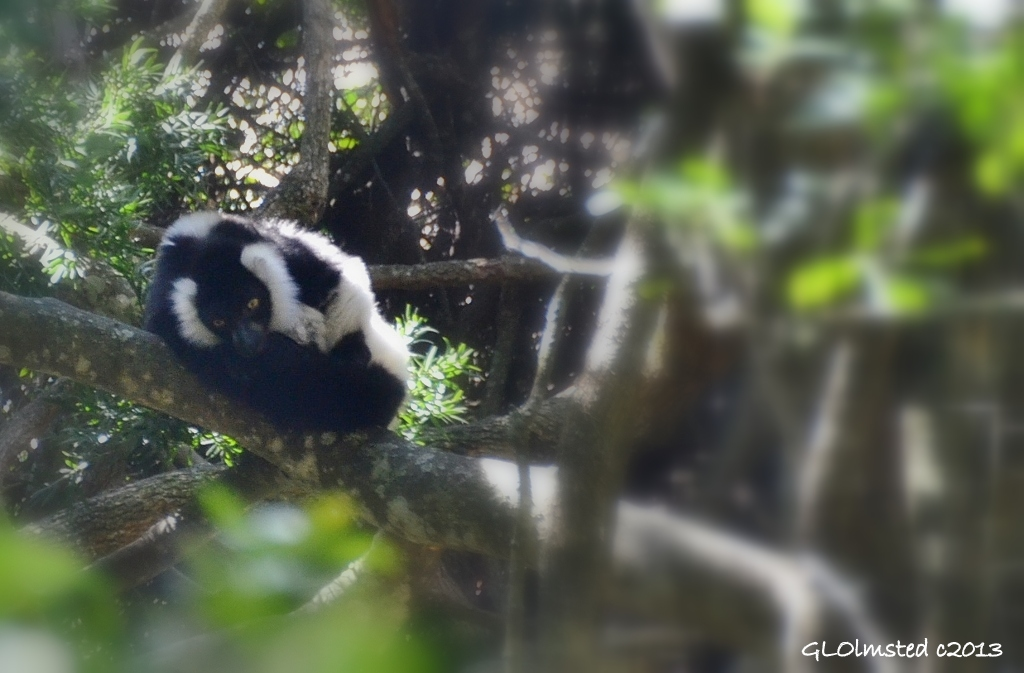
Getting close up at Monkeyland was OK but I still prefer to see wildlife in the wild. And the mosquitoes were horrific.
Getting there
I’d recommend visiting Monkeyland early to allow more time to visit the adjacent Birds of Eden where you can stroll at your leisure with no guide. There’s also a restaurant which I didn’t eat at and souvenir store. Plus there is more to see in the area.


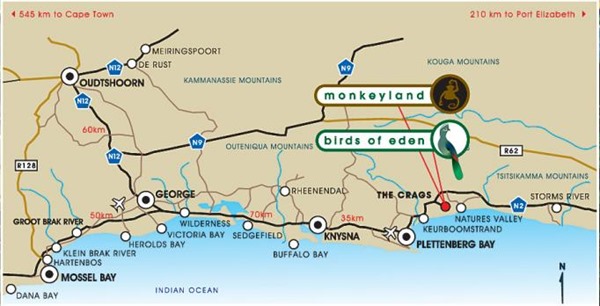
Sound like a place I would love to visit if we ever get back there again. Thanks for this interesting post Diane
It was an interesting place to visit.
Monkeyland and Birds of Eden really is worth a stop when on the Garden Route. I got to stop at both so many times when I was still guiding. Monkeyland really does an amazing job with the rehabilitation of monkeys.
I liked Monkeyland but really preferred Birds of Eden.
That looks likea great place to visit. I share your concerns about zoos but I go to them. A trip to Africa, Asia, or South America to see the animals in their natural state isn’t going to happen for a while.
A place like Monkeyland really does serve a purpose, but wild is better.
So glad that you had an enjoyable experience..ish! Your photos are fantastic, so much so I will share your blog onto our Facebook page.
Just to help you with a couple of things, unidentified monkey 1 is a Hanuman langur as is the one with the Spectacled langur (never heard of a fringe-faced lemur, sorry!!). Unidentified monkey 2 is a Cotton-top tamarin.
There are no baboons in the sanctuary, they are all free-living outside.
I totally agree, wildlife is so much better viewed in the wild and in an ideal world, these primates would be in the wild too but we don’t and therefore all these ex-pets and laboratory animals live here in relative freedom.
We collect all the mosquitos at the end of the day, squeeze the blood out and sell it to the blood bank (just kidding) but yes, they are a nightmare however, the squirrel monkeys like to eat them..free food!
Enjoy the rest of your trip!
Claire (Facebook admin)
Thank you so much for the identifications. I tried to use your website to ID but unfortunately most of the photos aren’t labeled there. You folks do a great job which I totally appreciate. I have worked with animal rehab, it’s a double edged sword. Sure glad the squirrel monkeys eat at least some of those mosquitos.
I never go to zoos or other animal “sanctuaries” unless I’m in the cage and they are free. That said, I agree with you that this is a wonderful place for these animals unable to make it on their own. Your pictures are fantastic. I keep hoping some day I’ll be able to go see the wonderful wildlife of Africa myself but the years keep clicking away. Give Annie a big hug from me if she drifts in your way! :-))
At Monkeyland we are in the cage with the animals. Keep Africa on your list. If the tour I’m working on for next year works I’ll offer it again.
Big hugs will be given to Annie. I think she’s rolling in tomorrow.
I see Birds of Eden on that map:) I would have done the same thing…..snapping photos of all the monkeys:) I’ve been guilty of feeding the monkeys…..:)
Wait until you see all the delightful birds from Birds of Eden, which was much more fun than Monkeyland.
Shame on you for feeding the monkeys. 😉
What fabulous close-ups of the monkeys and wildlife. Looks like it was a worthwhile visit. I’ve never seen some of these monkeys before.
As most of the monkeys I’ve seen in the wild are Vervets it was nice to see other species.
You got some darling pictures.
I love the little tamarin/marmoset. I used to breed the Common Marmoset and sure do miss them.
This place was a bit too hookey for me, even with cute monkeys.